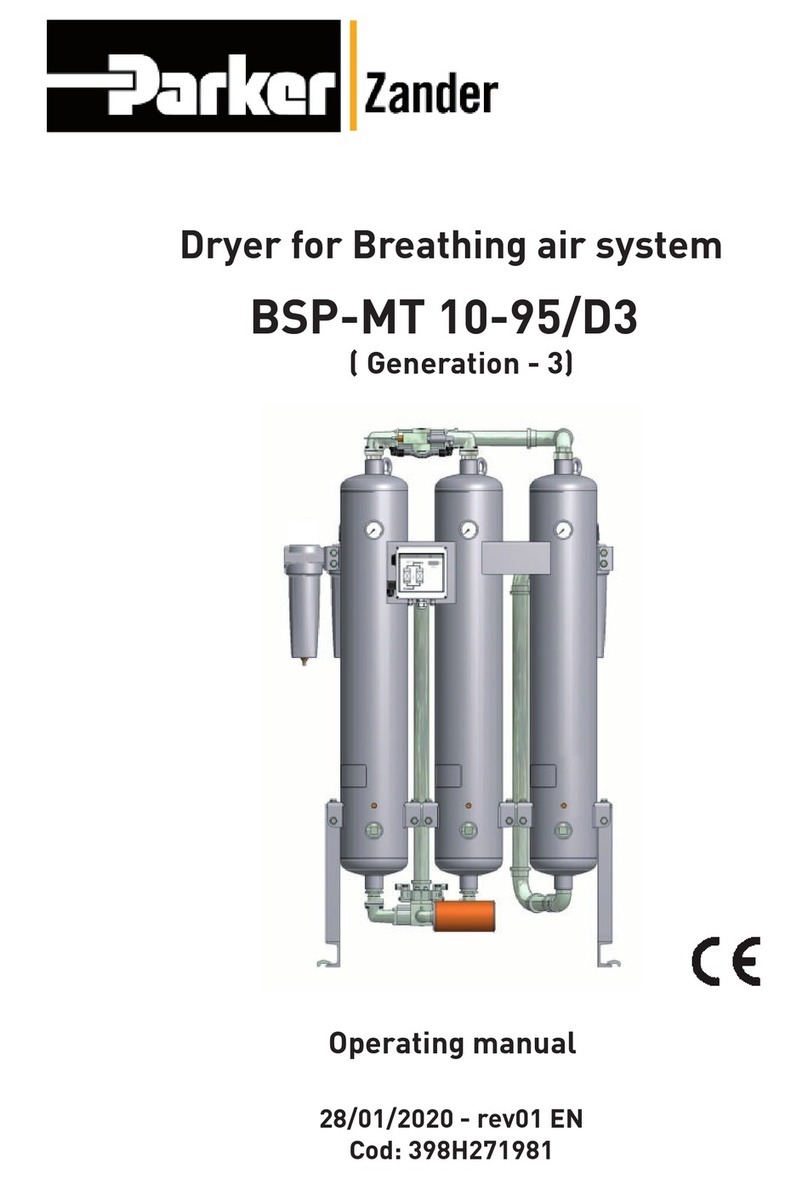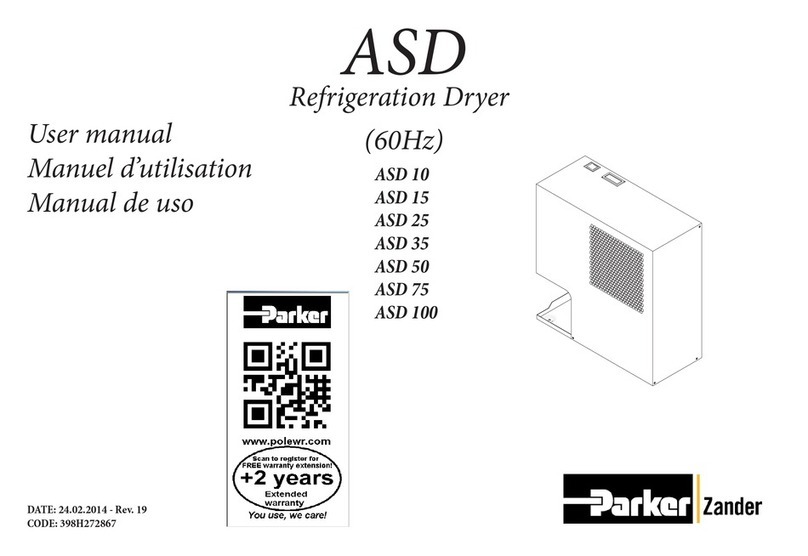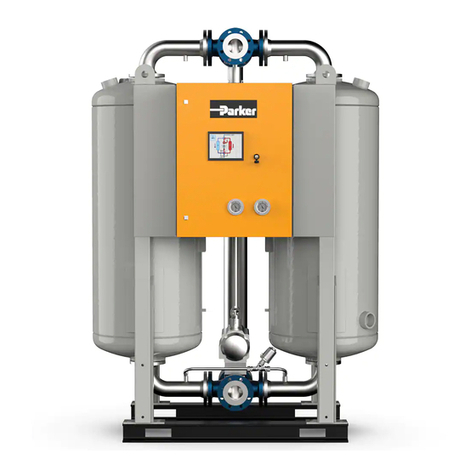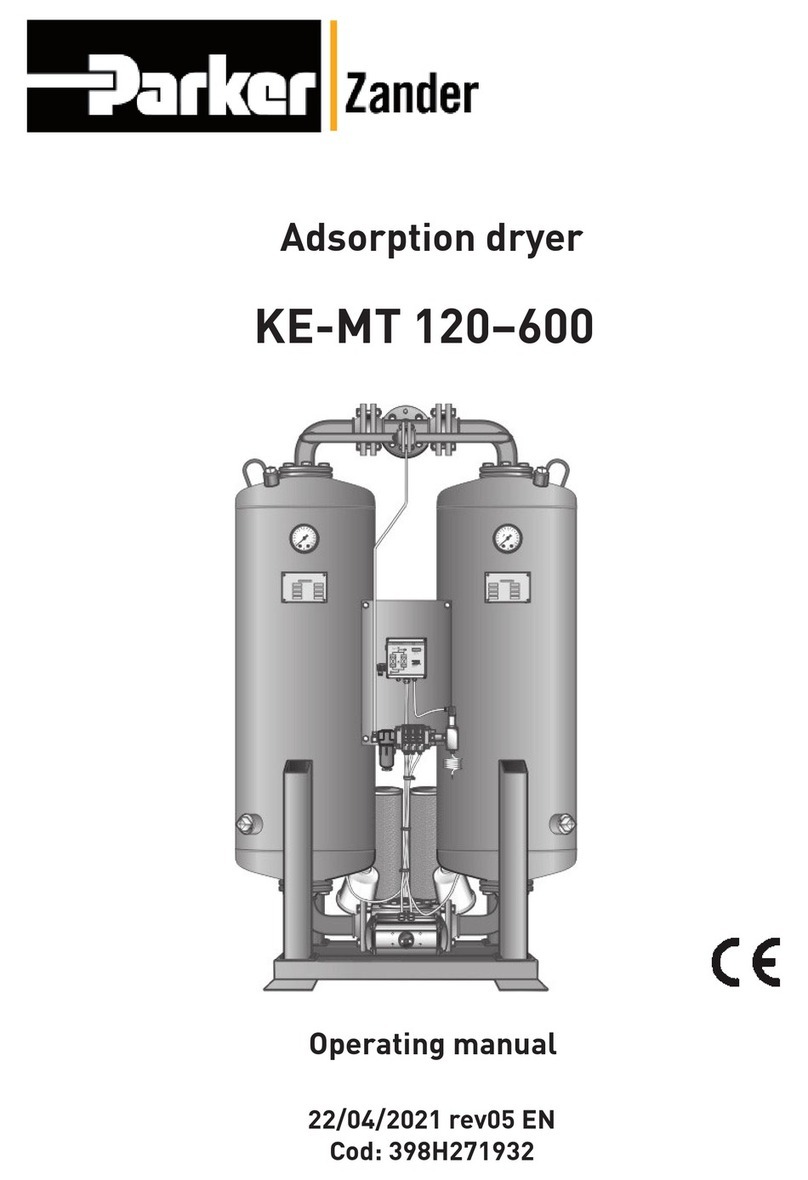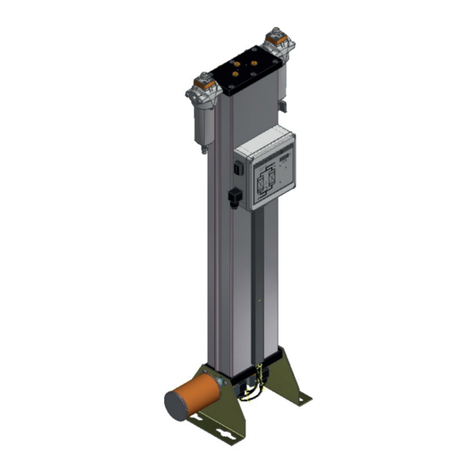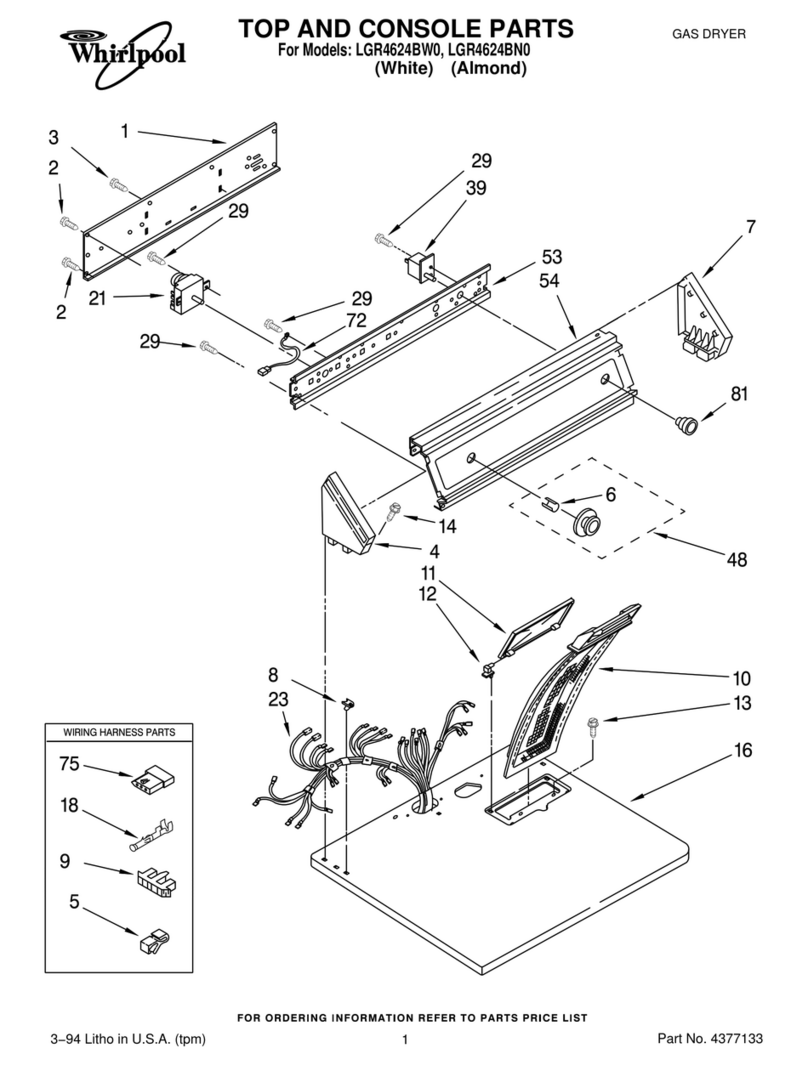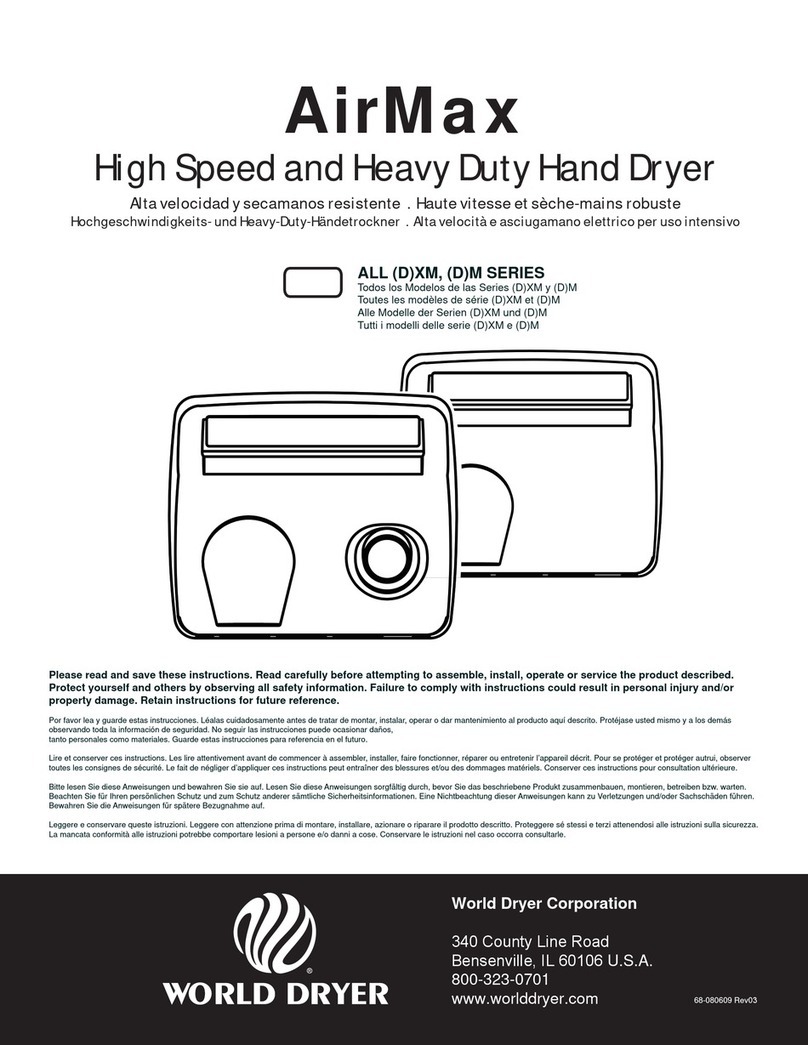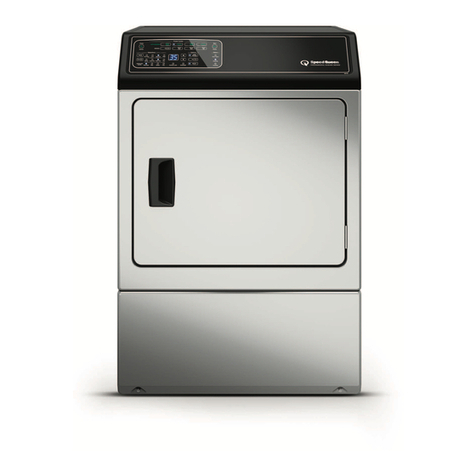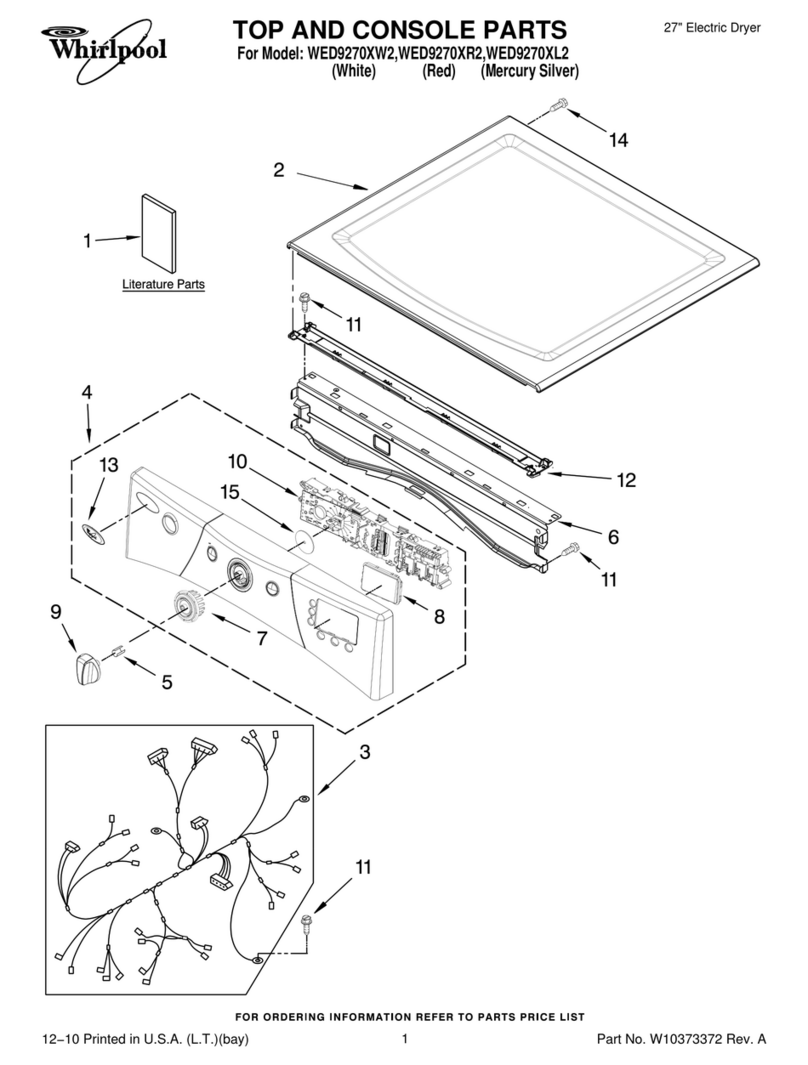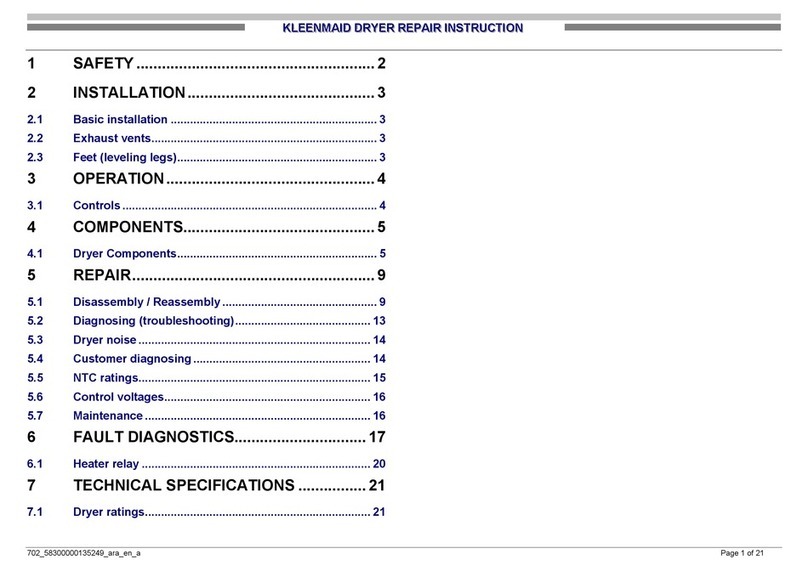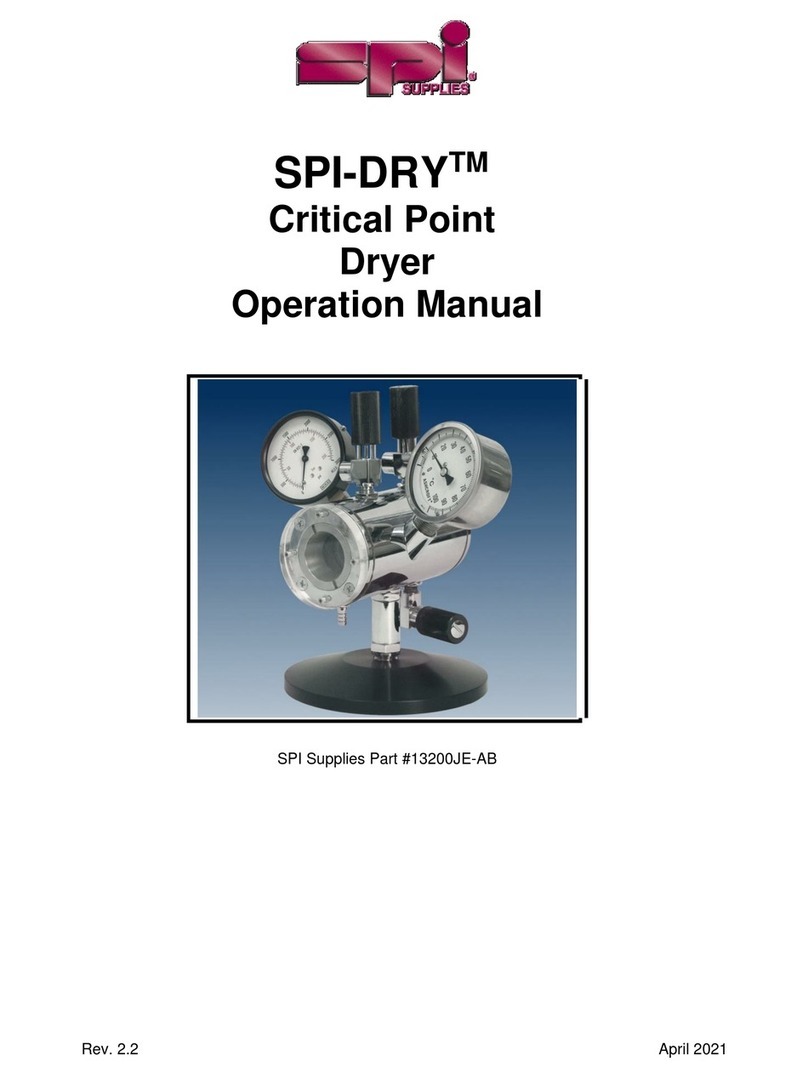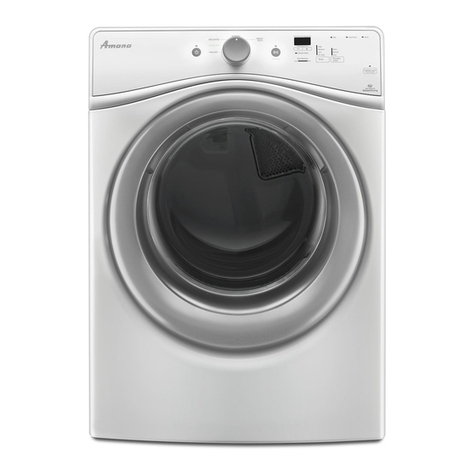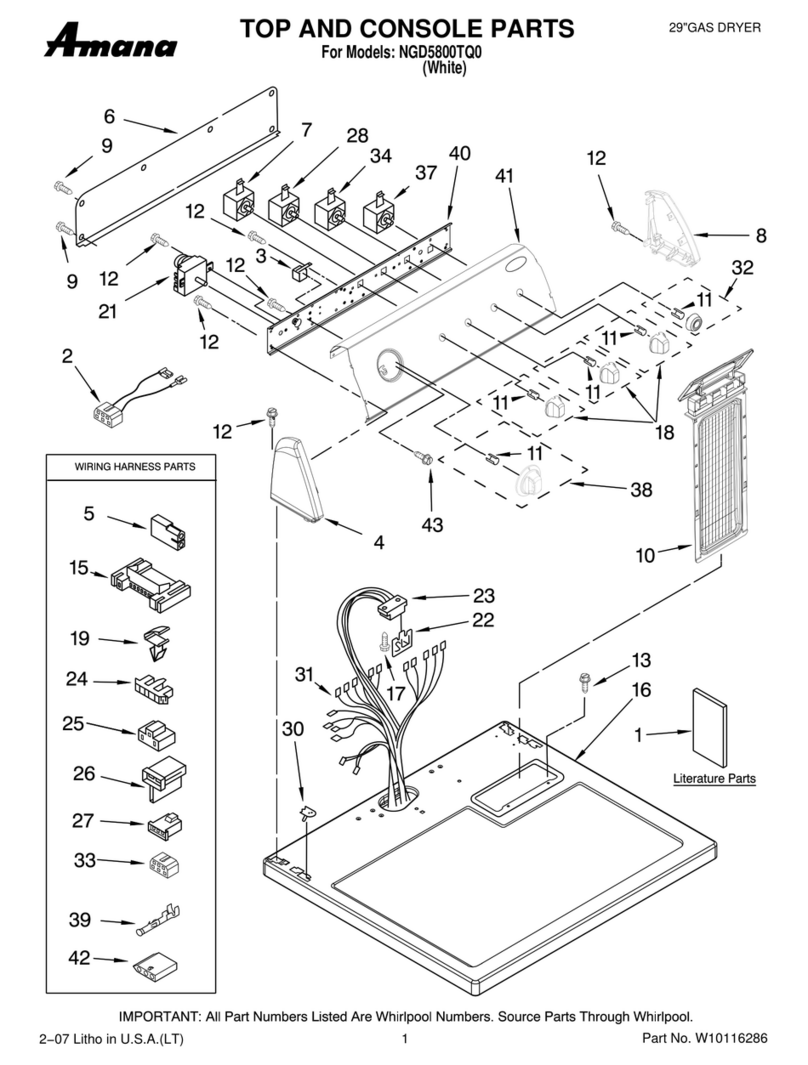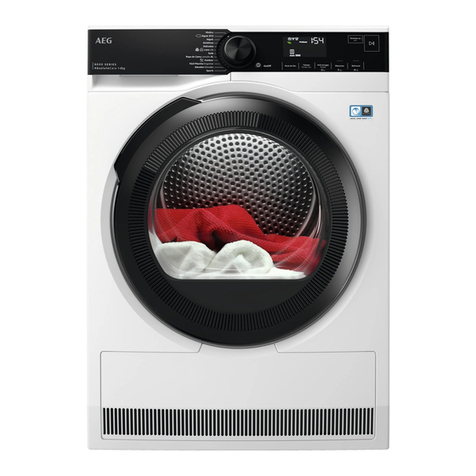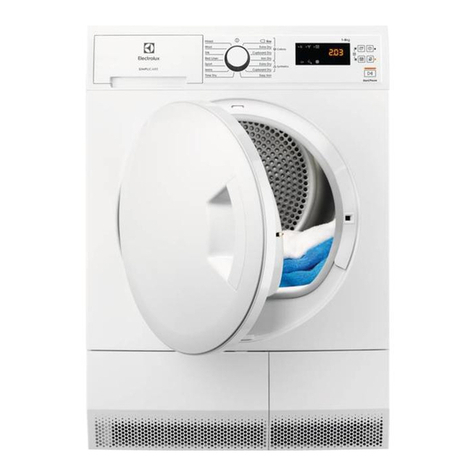
EN | User Manual
K-MT 1-8/D3 1
Index
Machine passport 3
General information 4
Manufacturer’s details .............................................................................................................. 4
Details on the dryer................................................................................................................... 4
About these operating instructions........................................................................................... 5
For your own safety 6
General safety notes................................................................................................................. 6
Intended use of the dryer.......................................................................................................... 7
Signs and hazard areas on the dryer ....................................................................................... 8
Transportation, installation and storage 10
Information on transportation packaging................................................................................ 10
What to do in the case of transport damage occurring? ........................................................ 10
Transporting and installing the dryer....................................................................................... 11
Storing the dryer ..................................................................................................................... 13
Technical product description 14
Summary drawing................................................................................................................... 14
Function description ............................................................................................................... 14
Available options..................................................................................................................... 17
Installation 19
Preconditions for installation .................................................................................................. 19
Connect piping ....................................................................................................................... 20
Installing the electrical connection.......................................................................................... 21
Start-up 23
Requirements for initial start-up ............................................................................................. 23
Setting times of the operating phases .................................................................................... 23
Overview of operating and control elements .......................................................................... 24
Start up dryer.......................................................................................................................... 27
Changing cycle mode (optional) ............................................................................................. 29
Monitoring dryer operation 30
With dewpoint-sensing control (optional) ............................................................................... 30
Shutdown and restart dryer 31
Emergency shutdown ............................................................................................................31
Depressurising and shutting down the dryer .......................................................................... 31
If work is to be carried out on the electrical system ............................................................... 32
Restart .................................................................................................................................... 32
Maintenance and repair of the dryer 33
Notes on maintenance............................................................................................................ 33
Regular maintenance intervals................................................................................................ 34
Instructions for use of the dongle ........................................................................................... 35
Daily maintenance tasks ......................................................................................................... 35
Maintenance work to be completed every 12 months............................................................ 36
Maintenance work to be completed every 24 months............................................................ 38
Maintenance work to be completed every 48 months............................................................ 38
Identify and eliminate faults 43
Summary of faults................................................................................................................... 43
